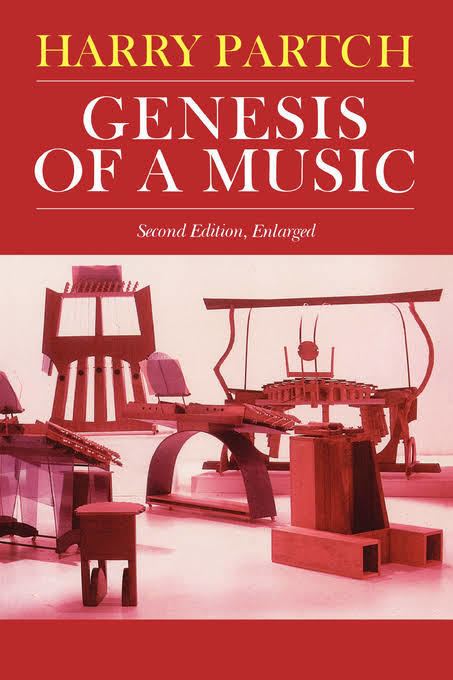8.8 /10 1 Votes8.8
Originally published 1946 Genres Non-fiction, Music | 4.4/5 Goodreads | |||||||||||||||||||||||||||||||||
 | ||||||||||||||||||||||||||||||||||
Similar Musician books, Other books | ||||||||||||||||||||||||||||||||||
Genesis of a Music is a book first published in 1949 by microtonal composer Harry Partch (1901–1974).
Contents
Partch first presents a polemic against both equal temperament and the long history of stagnation in the teaching of music; according to Alex Ross, this is "the most startling forty-five-page history of music ever written". In particular, Partch holds Johann Sebastian Bach responsible for a downhill trend in music, holding him responsible for "the movement toward equal-tempered tuning, which meant that composers could not absorb the scales of other world traditions; and the urge to make music ever more instrumental and abstract."
He then goes on to explain his tuning theory based on just intonation, the ensemble of musical instruments of his own invention (such as the "Surrogate Kithara, a struck-string, harplike instrument", and the guitar with movable frets he used to compose Barstow), and several of his largest musical compositions.
The book has been highly influential to succeeding generations of microtonal composers, including Lou Harrison, Ben Johnston, and James Tenney. A revised and enlarged second edition was published just before Partch's death in 1974.
Concepts
Partch presents 4 "basic monophonic concepts":
- Consonance and dissonance: "The ear informs us that tones which are in small-number proportion, say in the relation of 2 to 1, are strong, clear, powerful, consonant."
- "The smaller the number involved in the [interval] ratios, the more consonant the ratio; the larger the numbers, the more dissonant".
- "Dual Identity": "Every ratio of a Monophonic system is at least a dual identity."
- "Odentity [is] determined by the odd-number ratio component of the numerator, and another one, the Udentity [is] determined by the odd-number component of the denominator. A ratio thus always belongs to two tonalities, an Otonality in accordance with its Odentity, and an Utonality in accordance with its Udentity."
- Minor: "Under-number Tonality, or Utonality ("minor"), is the immutable faculty of ratios, which in turn represent an immutable faculty of the human ear."
- See: Arithmetic progression and Undertone series
- History: Music has appeared to have advanced up the harmonic series throughout history.
- Pythagorean tuning is 3-limit, "just intonation" often refers to 5-limit tuning, while Partch uses an 11-limit tuning. Partch admirer Ben Johnston uses 31-limit or higher "extended just intonation". See: Emancipation of the dissonance
